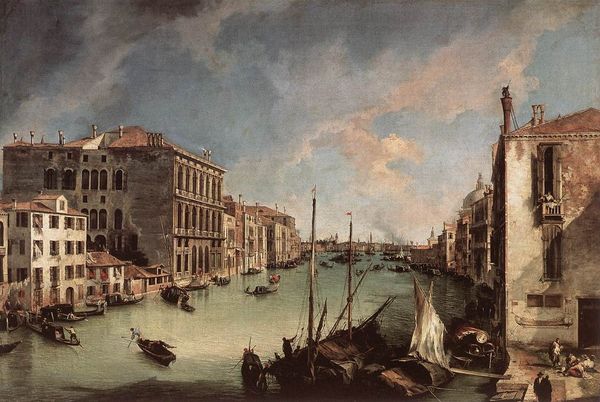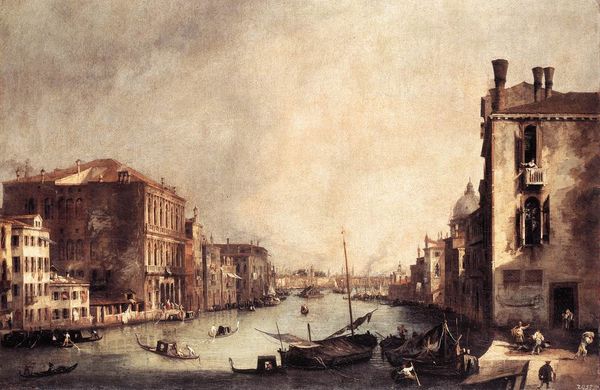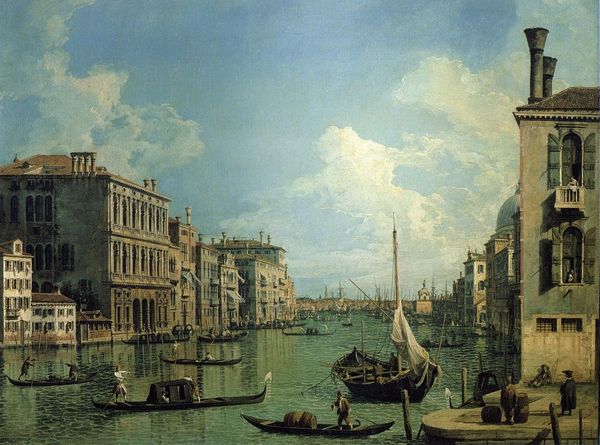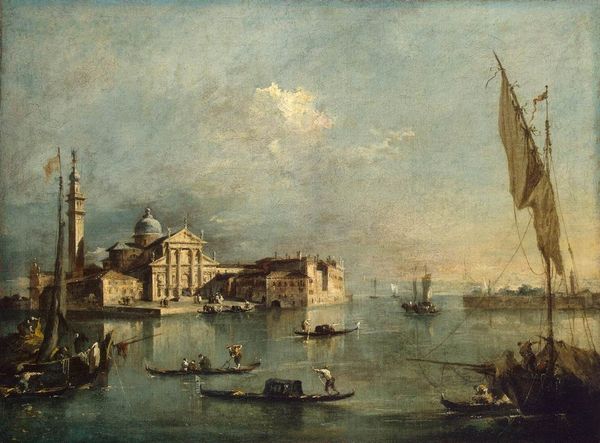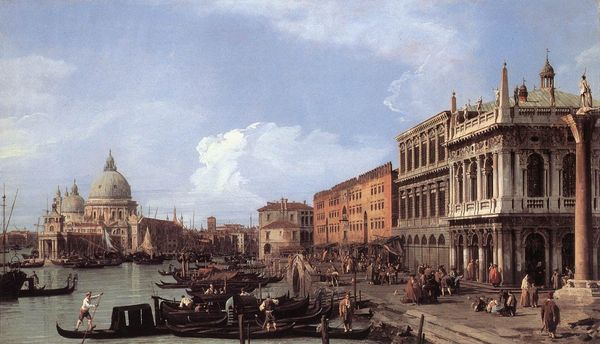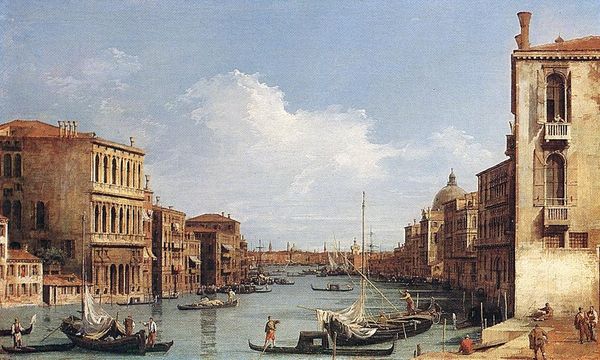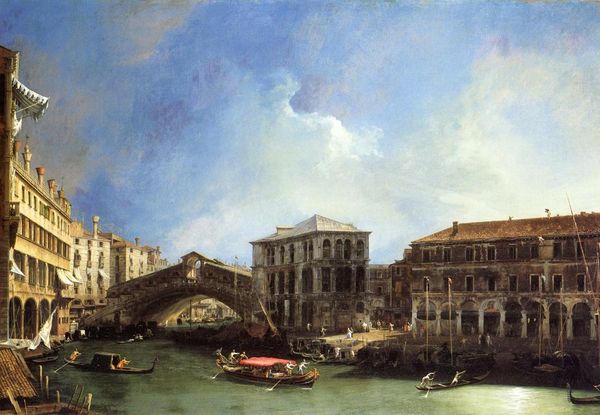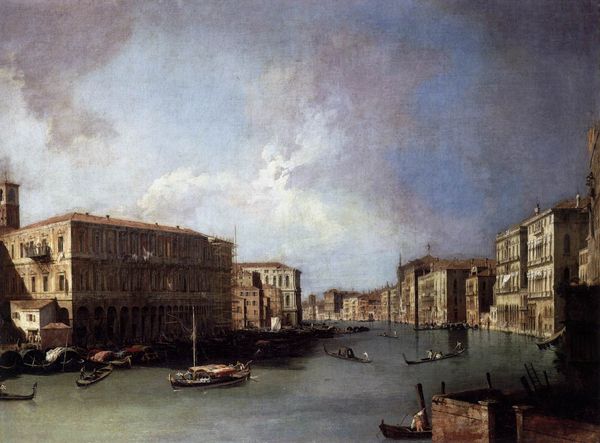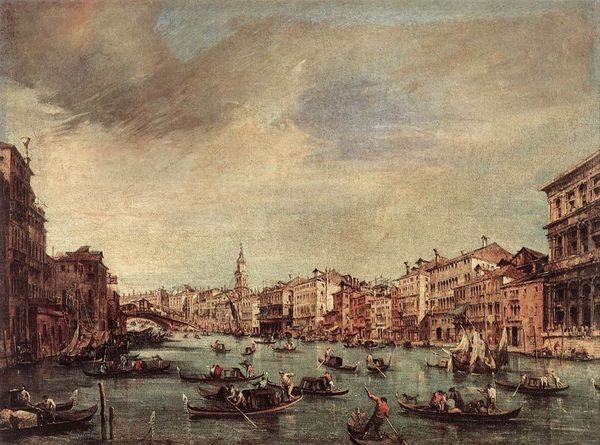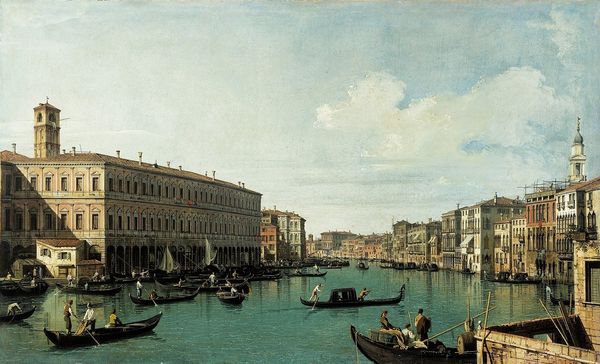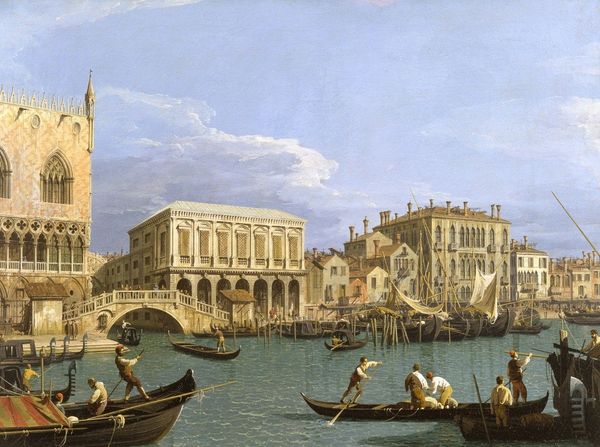
Grand Canal: Looking North East toward the Rialto Bridge 1725
0:00
0:00
canaletto
Gemäldegalerie Alte Meister, Dresden, Germany
painting, oil-paint
#
venetian-painting
#
baroque
#
painting
#
oil-paint
#
landscape
#
perspective
#
cityscape
Dimensions: 29.5 x 42.5 cm
Copyright: Public domain
Curator: Good morning. We're standing before Canaletto's "Grand Canal: Looking North East toward the Rialto Bridge," created circa 1725 using oil on canvas. Editor: Instantly, I feel like I've stepped back in time, like the mist has lifted just enough to catch the light dancing on the water. There's a hazy quality, almost dreamlike. Curator: Note Canaletto's manipulation of perspective. The artist utilizes a wide-angle view that stretches the pictorial space, creating a sense of depth. This, paired with a meticulous attention to detail in the architectural rendering, defines his unique topographic style. Editor: Absolutely, those buildings, though grand, have a kind of gentle decay to them, which, for me, enhances their allure. The brushwork is incredible—see how the light hits the ripples on the canal and reflects upward. It’s mesmerizing. Did Canaletto ever just kick back and take a water taxi? Curator: Likely not on company time! We can look at the underlying structures inherent to Venetian paintings—the light, color, form—to appreciate its representational elements. Think about it, the very construction of a painting is defined by layers of geometric shapes. Editor: Always geometry! (Laughs). Well, I love how he's placed these gondolas and boats almost as little rests for the eye—grounding you in that space as you travel through time. I love thinking of all the lives, loves, dramas played out on those canals! Curator: A valid emotive response. The structure however presents what you mentioned about life using horizontal lines within a vertical format. Note the interplay between shadow and light as representational components adding dramatic contrasts. Editor: Oh, without a doubt, and look closely, there's real humanity here—small figures in the gondolas. People getting on with it, dwarfed by their surroundings. The sheer scale is rather overwhelming! Curator: It’s precisely through that dialectic—between the micro, personal dramas you observed, and the macro-architectural elements, which ultimately determines the spatial unity—that Canaletto elevates what might simply be a topographical document into something transcendent. Editor: That’s well said, in transcending beyond merely showing to, through artistry, revealing a little more about us humans too! Curator: Indeed. Canaletto delivers a perspective both historically relevant, and technically astute. A prime example of Venetian Baroque landscape. Editor: And that mastery brings the place alive in the now, doesn’t it? Which, I guess, is why we still stare at paintings made centuries ago!
Comments
No comments
Be the first to comment and join the conversation on the ultimate creative platform.
